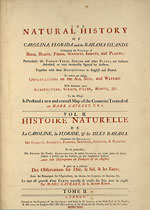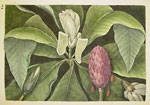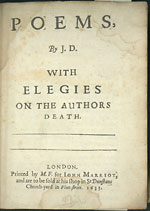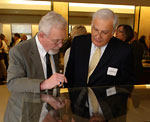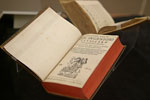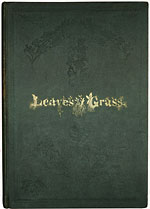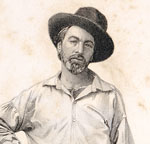Texas Tornado
A&M’s Aggies Cultivate a Top Research Library By Nicholas A. Basbanes
 Nicholas A. Basbanes recently received a National Endowment for the Humanities fellowship to work on his book on paper, which is forthcoming from Knopf. His most recent book is Editions & Impressions, a collection of essays. His other works include the acclaimed A Gentle Madness, Every Book Its Reader, Patience & Fortitude, Among the Gently Mad, and A Splendor of Letters.
Nicholas A. Basbanes recently received a National Endowment for the Humanities fellowship to work on his book on paper, which is forthcoming from Knopf. His most recent book is Editions & Impressions, a collection of essays. His other works include the acclaimed A Gentle Madness, Every Book Its Reader, Patience & Fortitude, Among the Gently Mad, and A Splendor of Letters.
For those who may not have been paying close attention over the past 10 years or so, take my word for it: There is a major new player in the world of special collections, one that sees merit in strengthening its holdings on a sustained basis in a multitude of exciting areas while firmly establishing itself as a research center of first resort.
Numbers alone do not tell the whole story of what has been going on at Texas A&M University since the late 1990s, but they matter nonetheless as a measurement of serious intent. This past March, the university (in College Station, about 100 miles northwest of Houston) celebrated the addition of its four millionth book, an exceedingly rare copy of the 1617 Barcelona edition of Don Quixote, combining for the first time the first two parts of Cervantes’ great novel, which had been issued individually in 1605 and 1615. What makes the acquisition especially sweet is that it’s the only perfect copy held in any North American library.
The university’s three millionth book—a first-issue copy of Walt Whitman’s Leaves of Grass (1855)—was acquired in 2004, meaning that Texas A&M did in five years what it had taken them 12 years to accomplish between 1992 and 2004: add a million books to the stacks. This remarkable rate of growth has resulted in the university’s rapid climb in the annual rankings compiled by the Association of Research Libraries over that same period from 34 to 26 in number of volumes held, and 12th among publicly funded universities.
Any suggestion that this dogged commitment to print has in some way been done at the expense of technology is rendered moot by yet another statistic: Texas A&M ranks third in the United States among all university libraries in funds expended each year on electronic research materials, surpassed only by Penn State and Columbia, apt testimony that it is not necessary to advance one area of collecting at the expense of another—though the trend in recent years at many other institutions has veered toward the marginalization of books and material objects in favor of technology.
Along with the impressive numbers it now boasts in total holdings has been the determined acquisition of rare books and special collections. Indeed, the four millionth book milestone was a dual affair, the acquisition sharing center stage with a 10th-anniversary celebration of the restoration of the Cushing Memorial Library as the university’s principal repository for special collections, highlighted by an exhibition that focused on treasures gathered during this extraordinary period of growth.
Called “A Decade of Promise,” the show—on view through September of this year, and the subject of a magnificent catalog available from the library—features magnificent materials in a striking variety of disciplines. A few of the highlights include: a 1633 first edition of John Donne’s Poems; George Catlin’s North American Indian Portfolio (1844); Mark Catesby’s Natural History of Carolina, Florida and the Bahama Islands (two volumes, 1731–43); a Kelmscott Press edition of Chaucer (1896); and a 1535 edition of Gonzalo Fernández de Oviedo’s La Historia General de las Indias. Many important archives have been added as well, along with many materials that support existing strengths.









